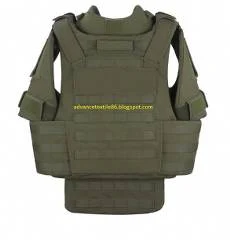Kevlar fabric
Kevlar
fabric is a heat-resistant and strong synthetic fiber fabric that is related to
other aramids like Nomex and Technora. It was developed by Stephanie Kwolek in
Dupont in 1965 and this high-strength material was used commercially in the early 1970s as a replacement for steel in race tires. It is generally spun into
ropes or fabric sheets that can be used as an ingredient in composite material
components.
Polish-American
chemist Stephanie Kwolek, while working at Dupont, feared a shortage of
gasoline when she discovered a poly-para phenylene terephthalamide (K29) branded
Kevlar. In 1964, her team began looking for new lightweight strong fibers for
lighter, but stronger tires. The polymers he was working with at the time,
poly-p-phenylene-terephthalate and polybenzamide, formed liquid crystals during
that solution, which was unique to the polymers of that time.
Kevlar fabric has many applications that are ranged from bicycle tires and racing sails to
bulletproof vests, due to its high strength-to-weight ratio. For this reason,
it is five times stronger than steel items. It is used to make modern marching
drumheads that resist high impact. It has been also used for mooring lines and
other underwater applications.
Properties of Kevlar fabric
i.
Kevlar fabric is a heat-resistant and very strong synthetic fiber fabric
ii.
It has high tensile strength, which is five times stronger than steel.
iii.
It is a high modulus of elasticity;
iv.
It is very low elongation up to breaking point;
v.
It is low weight fabric;
vi.
It has high chemical inertness;
vii.
It is a very low coefficient of thermal expansion;
viii.
It has high fracture toughness;
ix.
It has high cut resistance;
x.
It has textile processability power
xi.
It has flame resistance ability.
Kevlar synthesis process
Kevlar fabric is synthesized in a solution by producing hydrochloric acid as a byproduct from
monomers 1,4-phenylene-diamine and terephthaloyl chloride in a condensation
reaction. The resulting liquid-crystal behavior and mechanical drawing are in
the polymer chains on the fiber side. At the initial time,
hexamethylphosphoramide was the solvent used for polymerization, but for
protection, Dupont replaced it with a solution of N-methyl-pyrrolidone and
calcium chloride. Since this process was patented by Akzo in the production of
Twaron, the patent war ensued. Kevlar production is expensive because of the
inconvenience caused by using concentrated sulfuric acid, which needs to be
kept in a water-insoluble polymer solution during synthesis and spinning.
Types of Kevlar
i.
Kevlar K-29 – It
is used for industrial purposes, such as cables, asbestos replacement, tires,
and brake linings.
ii.
Kevlar K49 – It
has a high modulus that is used in cable and rope products manufacturing.
iii.
Kevlar K100 – It is a colored version of Kevlar that is used in ropes and cables, tapes and
strappings, gloves, and other protective apparel, and sporting goods
manufacturing.
iv.
Kevlar K119 – It is
higher-elongation, flexible, and more fatigue resistant
v.
Kevlar K129 – It has
higher tenacity for ballistic applications
vi.
Kevlar K149 – It is the highest tenacity for ballistic, armor, and aerospace applications
vii.
Kevlar AP – It has a 15%
higher tensile strength than K-29 type Kevlar.
viii.
Kevlar XP – It is a
lighter weight resin and KM2 plus fiber combination
ix.
Kevlar KM2 – It is
enhanced ballistic resistance for armor applications.
Applications of Kevlar products
i.
Kevlar is used in cryogenics for lower thermal conductivity and higher strength
than other materials for suspension purposes.
ii.
To reduce any heat leakage in paramagnetic elements it is mostly used to
suspend the perimeter of paramagnetic salts from a superconducting magnet
mandrel.
iii.
It is used as a thermal standoff or structural support where low heat leakage
is needed.
iv.
It is used in personal armor like combat helmets, ballistic face masks, and
ballistic vests.
v.
It is used to make gloves, sleeves, jackets, chaps, and others for protecting
users from cuts, abrasions, and heat.
vi.
Kevlar sail is used for high-performance racing boats.
vii.
It is also used as -an inner lining for some bicycle tires, shoelaces, musical
instruments, non-stick frying pans, and smartphone backplate making.











0 Comments